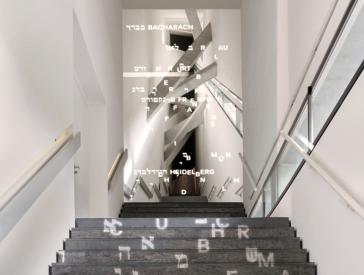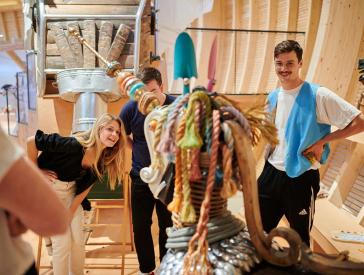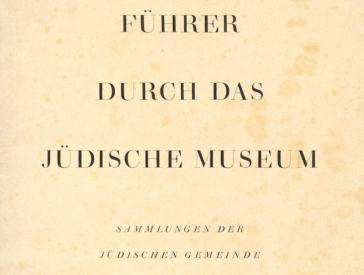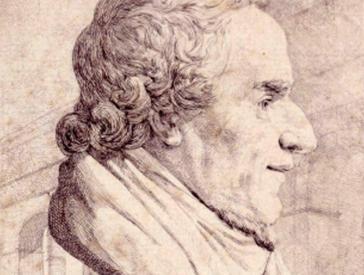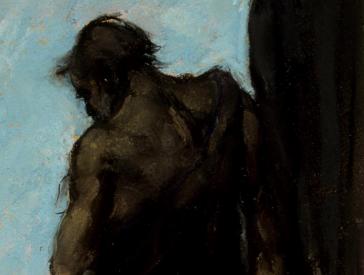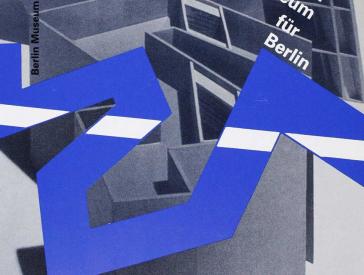The First Jewish Museum in Berlin
Inka Bertz
The first Jewish Museum in Berlin was an establishment of the Jewish community, located at Oranienburger Strasse 31 next door to the New Synagogue.
An Inheritance from Albert Wolf
In 1907, the Dresden jeweler Albert Wolf bequeathed his extensive collection of religious artifacts, coins, medals, portraits, manuscripts, prints, and archaeological finds to the Jewish Community of Berlin. From 1917 onward, the collection was exhibited in two rooms near the community library and under the supervision of the library director, Moritz Stern. But the collection languished there.
Expanding the Art Collection
When representatives of the cultural-Zionist Jewish People’s Party gained influence on the Community’s cultural efforts, the status of the collection gradually evolved. A fund was set up for purchasing contemporary art, mainly as way to give artists financial support. With the hiring of art historian Karl Schwarz in October 1927 – first as an assistant and later as curator and director – the Jewish Community Art Collection began its transformation into the Jewish Museum.
Museum Association Established, Grand Opening
In 1929, Schwarz founded the Jewish Museum Association with Max Liebermann as the honorary chair. The holdings were significantly expanded, particularly with fine art and artifacts from excavations in Palestine. The former Community Hospice in the building next to the synagogue was rebuilt as a museum. The grand opening was held on 24 January 1933.
Staff Changes from 1933 On
Only six days later, the appointment of Adolf Hitler as Reich Chancellor changed circumstances entirely. In summer 1933, Karl Schwarz accepted an offer to establish and run the Tel Aviv Museum of Art. After his departure, his employee Erna Stein-Blumenthal became director of the museum. She was succeeded by Franz Landsberger, an art historian from Breslau, who was assisted by the librarian Irmgard Schüler. The art historian Rahel Wischnitzer-Bernstein served as an independent curator.
An Important Hub of the Jewish Community
From 1933 to 1938, this team put on numerous exhibitions and developed the museum into an important hub of the Jewish community's cultural life. One important function of the museum was to give living Jewish artists opportunities to exhibit in addition to honoring artists of the past. Above all, the museum bolstered its visitors' cultural self-awareness, as more and more Jews were turning to Jewish culture under the pressures of anti-Semitic policies. And yet, as with other Jewish institutions, the museum faced ever harsher constraints and harassment on the part of the German authorities.
Seizure and Survival of the Museum's Holdings
After the November 1938 Pogrom, the Gestapo seized the museum's holdings. Their whereabouts over the years that followed can only be partially reconstructed. In 1946, most of the painting collection was discovered in a basement on Schlüterstrasse in the Charlottenburg district of Berlin. In 1952, the Jewish Restitution Successor Organization transferred these paintings to the Bezalel Museum, now the Israel Museum, in Jerusalem. A smaller share of them was given to Jewish institutions in the United States and Europe. Jakob Steinhardt's large-scale painting Der Prophet (The Prophet) resurfaced in Bavaria in 1965 under mysterious circumstances. The Jewish Community of Berlin was able to reacquire it and it is now exhibited in the permanent exhibition of the New Synagogue Berlin – Centrum Judaicum Foundation. Some of the photography documentation and selected documents and objects were shipped away by Nazi authorities and are now at the Jewish Historical Institute in Warsaw. Still, the lion's share of the extensive collections of Judaica, coins and medals, archaeological finds, and prints remains unaccounted for.
Further Reading (in German)
- Rauschenberger, Katharina. Jüdische Tradition im Kaiserreich und in der Weimarer Republik. Zur Geschichte des jüdischen Museumswesens in Deutschland (Jewish Tradition in the German Empire and the Weimar Republic: The History of Jewish Museums in Germany). Hanover: Hahn, 2002.
- Simon, Hermann. Das Jüdische Museum in der Oranienburger Strasse. Geschichte einer zerstörten Kulturstätte (The Jewish Museum on Oranienburger Strasse: History of a Destroyed Site of Culture). Teetz: Hentrich & Hentrich, 2000 (E.A.: Berlin: Berlin Museum 1983; 2nd ed., Berlin: Union, 1988).
- Schütz, Chana C., and Hermann Simon (Eds.), Jüdische Kunst – jüdische Künstler: Erinnerungen des ersten Direktors des Berliner Jüdischen Museums (Jewish Art – Jewish Artists: Memories of the First Director of Berlin's Jewish Museum). Karl Schwarz, Teetz: Hentrich & Hentrich, 2001.
- Schütz, Chana C. and Hermann Simon (Eds.). Auf der Suche nach einer verlorenen Sammlung: das Berliner Jüdische Museum (1933–1938) (A Quest for a Lost Collection: Berlin's Jewish Museum (1933–1938). Berlin: Hentrich & Hentrich, 2011.
- Schütz, Chana C. and Hermann Simon (Eds.). Bestandsrekonstruktion des Berliner Jüdischen Museums in der Oranienburger Straße (Reconstructing the Holdings of the Berlin Jewish Museum on Oranienburger Strasse). Berlin: Hentrich & Hentrich, 2011.
Contact
Inka Bertz
Curator of Art
T +49 (0)30 259 93 414
i.bertz@jmberlin.de
Jewish Museum Berlin
Lindenstraße 9–14
10969 Berlin
Citation recommendation:
Inka Bertz (2012), The First Jewish Museum in Berlin.
URL: www.jmberlin.de/en/node/2966
